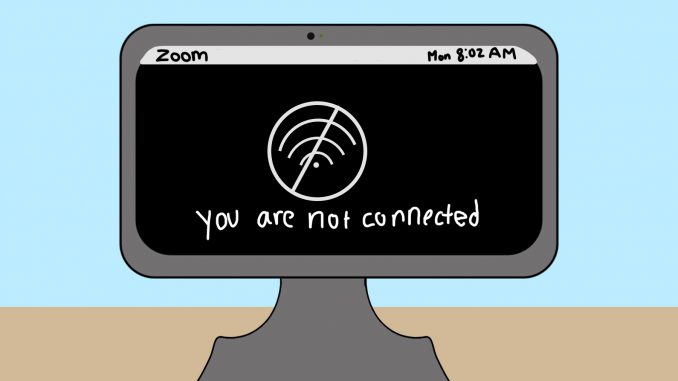
Students and professors around the world have transitioned from traditional in-person instruction to virtual learning in a matter of months.
Only two weeks in, Temple University students are already experiencing a number of issues.
On Aug. 24, the first day of classes, Zoom, a video conference platform often used in synchronous remote learning, crashed early in the morning, KTLA 5 News reported. The website was down nationwide at perhaps the most inopportune timing.
The problem was resolved within a few hours, but this may have foreshadowed what’s to come.
Problems related to audio and visual, sharing screens, putting students into breakout rooms and sending meeting links are all common mishaps that could be avoided if classes were conducted asynchronously.
President Richard Englert announced on July 15 that online courses will be offered asynchronously or synchronously.
Students can view their class schedule on the Self Service Banner of TUPortal. Under each class, it will say “VIRT – OLL with reqd virtual meetings” or “OLL – Online.” Virtual classes with required meetings are synchronous, while online classes are asynchronous, according to the Office of the Registrar.
The College of Public Health enforced a webcam and microphone requirement for students’ laptops this semester. Some professors, like Bari Dzomba, have been lenient and excused students from this policy.
“I’m doing asynchronous classes for my graduate students and synchronous for my undergraduates,” said Dzomba, a health services administration and policy professor. “I prefer the trust, collaboration and communication with synchronous where everyone gets to see and hear each other live, but I do let students join by the phone due to laptop issues.”
Temple doesn’t designate course formats for faculty, wrote Ray Betzner, a spokesman for the university in an email to the Temple News.
“That decision is up to the faculty members, in consultation with their deans or department chairs in each school or college,” Betzner wrote.
More professors should consider asynchronous courses, as it will lessen the burden on themselves and students.
Sarah Sassler, a senior psychology major, took an asynchronous class at Montgomery County Community College for credit before the pandemic.
“My professors simply assigned work with optional meeting times once or twice a week to check in if students had questions,” Sassler said, “I preferred how self-paced they were.”
Some students don’t have a quiet environment to attend Zoom classes. For students living at home or in cramped apartments, family members, roommates and pets create background noise.
“One time, my cat was going nuts while I was trying to focus in class, so I eventually had to kick him out of the room,” said Mira Sadeghi, a senior public health major. “Another time, our maintenance man barged in without knocking and interrupted my class.”
Asynchronous classes would allow students to work more hours and keep their old laptops despite the condition of their webcam or microphone. Professors would not have to worry about Zoom malfunctioning in the middle of class, and professors and students could teach or participate without interference.
It’s a situation where both faculty and students win.
Nobody asked to be going to college during a pandemic, but we need to make things easier for students, not more complicated.


Be the first to comment